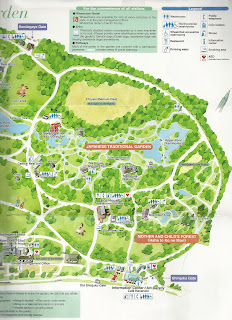My first earthquake: Sunday morning, 10th of July, 10.00 a.m.. I just got up when the hotelroom on the 33rd floor of the Keio Plaza started to sway and creak. And it didn't stop for 2 minutes. Immediately I felt completely safe in the room, but rather dizzy and nauseous. People down on the street outside continued to walk and drive around as if nothing was happening.
Within 5 minutes the website of the
Japan Meteorological Agency reported that it had been an earthquake of magnitude 7.1 off the coast of Sendai, and it reached JMA seismic intensity 3 in Tokyo. Only JMA seismic intensity 4 and up can be felt while driving in a car, so it was not too intense.
Given the on average 1500 earthquakes a year in Japan, the average per day is just over 4. But that figure encompasses all the earthquakes in entire Japan. Checking the JMA website for weekly earthquakes has shown 1-4 earthquakes every week in Ibaraki for the month August, scaling from 1 to 5. A recent article in the
Yomiri Shimbun reports that the amount of earthquakes, small and big, has increased since the big Tohoku earthquake, especially for the Southern Ibaraki prefecture (which is where I will be living in 1 month).
Coming from a country with 0 earthquakes a year (
drilling for gas doesn't really count), this makes it definitely worthwhile to be prepared. I used the guides below to help me prepare. Maybe they can help you too!
Items in my planned survival package:
Food: water and canned food, plastic spoon, medication, first aid kit
Clothes: warm and waterproof, blanket (don't forget shoes!)
Light: flashlight and batteries
Communication: radio and batteries
Travel: maps, pen and paper
Documents: personal information (passport), contact information in the Netherlands and Japan
Other: cash money, plastic bags
Helpful links:
For further preparations the Earthquake Survival Manual from the
Tokyo Metropolitan Government is very convenient and detailed.
If you are watching Japanese earthquake news and you have no idea what is going on, try listening to the words on
this page to see if you can recognize anything.

